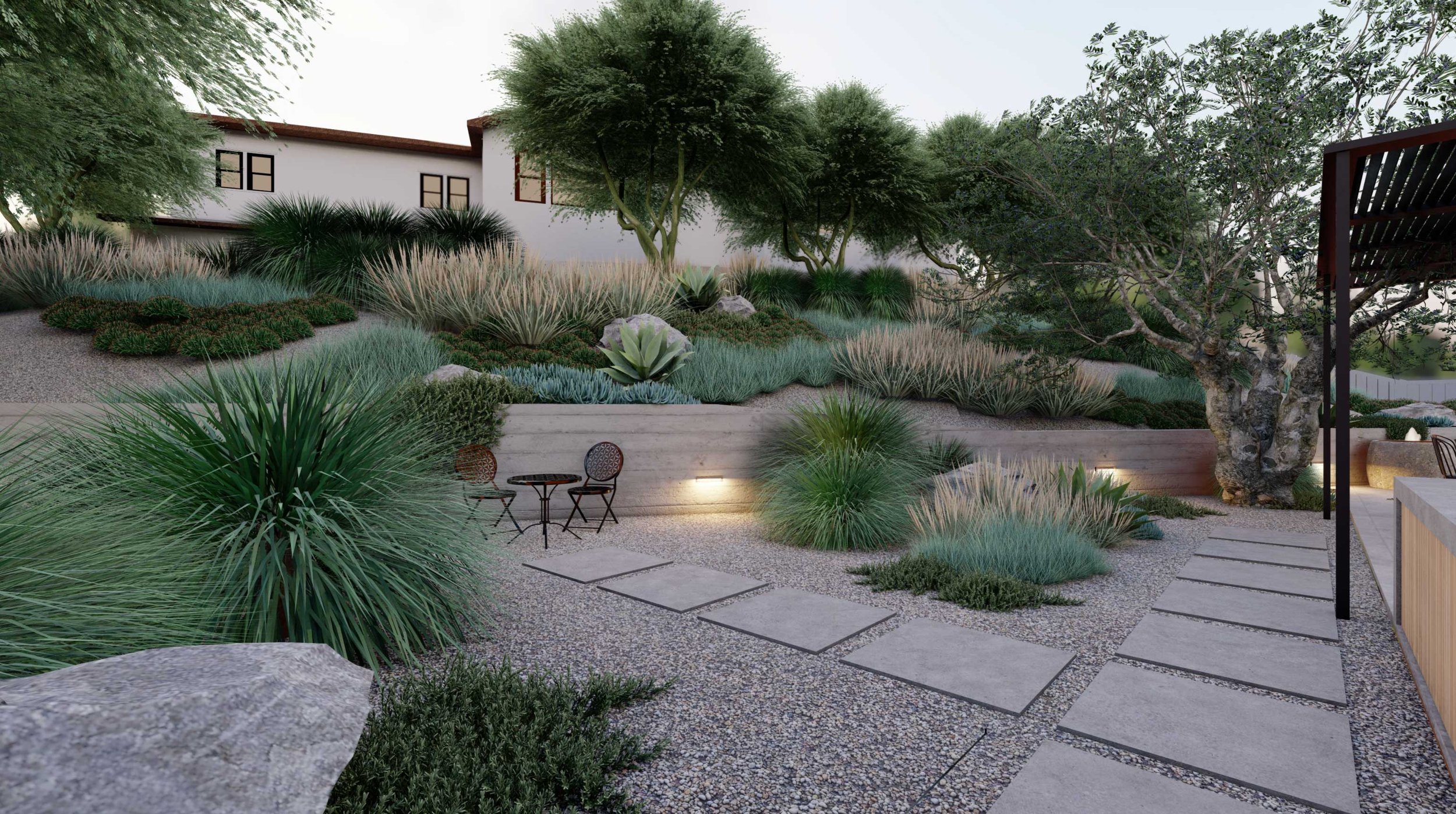More About Landscapers
Table of ContentsLandscapers Things To Know Before You BuyThe Definitive Guide for LandscapersLandscapers Things To Know Before You Get ThisThe Basic Principles Of Landscapers Landscapers - Truths
In the PNW there are semi-deciduous or semi-evergreen plants that might lose their leaves depending on exactly how cool the winter months is. - A level gathering space, made of timber or composite material (made to look like timber), typically nearby or connected to a framework.

- Granite that is weathered to the factor that it is a very fine aggregate. This is an all-natural procedure, and the outcome can be used for paths and outdoor patios. Broken down granite is commonly described as DG. It is especially helpful in contemporary landscapes. - Trick landscape attributes being suggested in a landscape design plan.
The 7-Second Trick For Landscapers
These goals direct the layout procedure, not the designer's design or preferences. Usual style goals in Portland are low maintenance, drought forgiving, and pet friendly.
Over time this layer can get extremely thick and make it difficult for water, sun, and nutrients to obtain to portions of the grass.- The process of accumulating and managing the flow of water on a property. This can be finished with grading, French drains pipes, completely dry wells, permeable surface areas, sump pump, rainfall yards, and much more.
- A slow-moving feeding irrigation system that makes use of flexible tubing and emitters to send out a precise amount of water to each plant. - The capability of a plant to survive without much summertime water.
- A garden feature where water is represented by an aggregate stone item, generally a crushed rock or granite.- A stone or flagstone outdoor patio, course, or pathway constructed without a concrete base.
The Definitive Guide to Landscapers
- A rock maintaining or totally free standing wall surface built without the usage of mortar. - An underground framework that collect water and permits it to slow percolate right into the soil around it.
Landscape style that is compatible with a websites' environment in both appearance and sustainability without negative impacts to the setting. Interrupting the landscape is a line of separation that creates aesthetic interest in the garden by separating one segment from an additional section. This can be visual or practical, maintaining one component (such as pea gravel) from getting combined into one more (like bark dirt).
Locations can additionally have a sensation of "unit" provided by trees, here are the findings other plantings, fences, or screens. The landscape near the entry to a building.
A plant that is foreign to the place where it will be planted. Not all "exotics" are intrusive or hazardous, and numerous can be well behaved or drought tolerant (Landscapers). A mass planting of ferns. Thicker bladed turf grass that spread using rhizomes.: The degree of dirt on your home before bark dust or compost is spread out.
A Biased View of Landscapers

The function, factor, or action that an area is be landscaped for. Area description for expanding plants for seeing, consuming, or physical activity.
Rock product, either rounded or fractured, that is reasonably small- typically 1" or much less. Reduced plants that are allowed or motivated to spread over a location. Can describe any kind of "hard" yard elements including statuary or rocks yet many commonly is utilized to refer to courses, patio areas, and walls.: Elevation distinction between the level of water in a pond (or the level of the pump if it sits outside the pond) and the upper outlet of water which affects efficiency of the water pump in gph (gallons per hour). Thick bushes or trees that create a fencing, display, or border.

Landscapers Things To Know Before You Get This
A more unwinded yard dominated by rounded rather than straight bed lines and a much less inflexible framework. Conventional PNW landscapes are informal. A plant that spreads out more than wanted, or into habitats where it does damage. Rose city has a list of intrusive plants that should not be set up in landscapes due to the fact that they can infect woodlands or waterways and have a peek at this website be tough to control.
Smart irrigation controller testimonials and recommendations right here. 2-D making of the recommended irrigation system. Can consist of head positionings and coverage, pipeline sizing, GPM specs, and products required to mount this system. An irrigation plan is typically unneeded for homes yet is common for commercial jobs. Certified specialist that designs landscapes, schooled in engineering and style as well as in horticulture.
Landscape designers generally have less schooling than Landscape Architects and are not licensed. A finished landscape style, describing all aspects for the new landscape.
Calcium material used to elevate the pH in dirt, which will make it less welcoming to moss. A water tight HDPE material used below fish ponds, streams and waterfalls in water features. Making use of several plantings of the very same range to complete a location in the landscape. This can reduce maintenance and water usage in the garden.